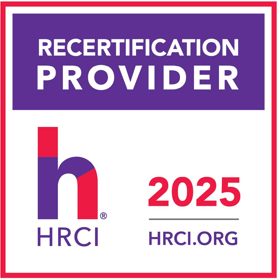What Do They Have in Common?
Colombia—what a beautiful country with a growing economy and wonderful, talented people! My visits to Colombia to work with Human Resources professionals to help them implement Talent Review and Succession Planning strategies have been both enjoyable and productive.
What have I learned from my friends in Colombia? In addition to the fact that Colombia is a country of some of the friendliest people in the world, Colombia is a country that produces the best coffee in the world! And how long does it take for the coffee plant to reach maturity and to produce coffee beans? It takes approximately 3-4 years. So if you plant, fertilize, water and cultivate the coffee plant, and if the environmental conditions are right, after the plant matures it will produce hundreds or thousands of coffee beans every year
| Coffee Beans | Our Employees |
| If you want to drink a cup of coffee this morning, planting a coffee bean in the ground today is not going to meet that need. | Similarly, if a key employee leaves your organization this morning, starting to develop a successor to fill the open position today is not going to meet that need. |
| If you plant a coffee seed and you don’t water it, you don’t fertilize it, and/or if the environmental conditions are not right, the plant will not produce the coffee beans you need, and in fact the plant may not grow at all. | Similarly, if you don’t take the time to identify talent, or if you don’t invest in development resources and internal opportunities for employees, or if the work environment doesn’t support employee growth and development, your top talent will not produce the results you need, and in fact top talent may leave the organization. |
| The more diligent and consistent you are in your cultivation of the coffee plant, the more coffee beans it will produce.Watering it once in a while after it has already withered and drooped is not going to produce either a quality coffee bean or a good quantity of coffee beans. | The more diligent and consistent you are in the development and coaching of your employees, the more your employees will be engaged and productive on the job. Allowing them to go to a training class once in a while is not going to do the job in preparing employees for their next role, and will not produce either a quality successor candidate or a quantity of successor candidates. |
So how can we take Colombia’s success with the production of top quality coffee beans and apply this in the workplace for talent management and successor development?
First, we can apply the principle of careful selection using criteria and processes. The best coffee beans are selected for both production and reproduction. This selection process requires time,examination processes, tools and years of experience and knowledge.No one would select the best coffee beans simply by saying “Well, that one looks nice”. The examiner is looking specific selection criteria such as color, size, firmness, smell, etc.
Similarly, the process of identifying valid successors in the organization takes time, it requires consistent processes, tools and selection criteria, and it requires the knowledge of the leadership team. The Talent Review meeting for business leaders is a tool used to gather leaders together to discuss top talent and to identify successors and development actions.
The Talent Review meeting provides the time slot, the structured process, and the observations the leadership team has made over the past year about each employee. The leaders in the Talent Review meeting use their own years of knowledge and experience to identify the top talent. A valid selection process also requires consistently-used tools to identify successors, readiness strengths and gaps for each employee, and to form action plans to increase the readiness of these employees to move into future roles. Simply placing names on a succession chart without these tools, discussions and criteria is like choosing the coffee beans that just “look nice”.
Now imagine if the coffee bean selection process did not take place at all – you would end up with beans that are too “green” to be used, you would end up with beans that are overripe or bitter, and you could even end up with items in your coffee that are not coffee beans at all!We can also overlook the best coffee beans, which should be used for both production and reproduction to sustain and to continuously improve the brand.
This is also what can happen with a Talent Review and Succession Planning does not take place at all—you can end up with employees who are too “green” to be ready as successors for a new role, but they are placed in the role anyway without success. Or, you have to spend the money to recruit and train another person from outside of the company to fill the position. Or,you can have employees who are “overripe” in their positions, who are not learning anything new, or who may not be adding new and innovative ideas. You can even end up with employees who are not meeting the organization’s expectations at all.And we can overlook the top talent, who should be cultivated, retained and develop for key roles that will sustain and grow the organization.
Secondly, we can apply the principle of identifying and developing readiness gaps. If a coffee crop is not thriving, what do we do? We look at each element of cultivation to identify strengths and gaps. Is the environment helping or hurting the growth of the plants? Are the plants receiving too much or not enough water?Do the plants need more fertilizer, or a different type of fertilizer?
Similarly, the Talent Review process allows the leadership team to look at each cultivation element for individual employees (typically just at the leadership level). Some employees might be ready for a new environment or a more challenging position. Some employees might need more coaching and development.Some employees need a stretch assignment or an experience of working on a project team. Some employees might have a high vacancy risk and therefore we should look at retention activities and/or succession plans for that employee.
When we are reviewing a coffee crop that is not ready for harvest or that is not thriving, we would not simply say, “Wait 1-2 years and it will be ready”. Instead, we would take an active role in identifying changing conditions, the need for water, the need for removing weeds, etc.We know that we can’t plant a coffee bean in the ground and then just come back a couple of years later to see if it is producing anything—just so the same with successor candidates.
This need to take an active role in identifying and successors applies in the workplace as well. It is not enough to say an employee is a “Ready 1-2 Years” Successor, and to place the employee’s name on a succession chart and hope the employee will be ready in time. Rather than identifying successor candidates in the organization as “Ready Now” or “Ready 1-2 Years”, we should identify successors as either “Qualified Successors” or as a “1-2 Gap Successor” or “3+ Gap Successor”.
If we ask managers to identify “Ready Now” successors for their position, they will often say no one is “Ready Now” for their position. They forget that they weren’t really “Ready Now” for their role when they took the position, and they may not consider that anyone who fills the role will have a learning curve. So rather than identifying and developing an internal person for their role, we state that no one is ready for the role and we take a chance on the people outside of the organization who we really know nothing about, and we hire them for the position instead.
Instead, using the term “Qualified Successor” can change the mindset of the manager when reviewing candidates for his or her own role. Now we are looking for internal people who meet or exceed the qualifications for the position if it were vacant today. We would then go on to look at strengths to leverage and development actions to take to increase the readiness even of the Qualified Successor. We would create a specific development plan to increase the qualifications of the successor candidate for future identified potential roles.
What does it mean to identify a “1-2 Gap Successor” or a “3+ Gap Successor”? These employees would be successor candidates who are not currently qualified to interview for the position if it were vacant today. They have 1, 2 or 3+ gaps in their qualifications to be considered for the role today. This type of successor candidate selection is much more concrete and “actionable” than the “Ready 1-2 Years” approach. Too often, year after year,the candidate is still “Ready 1-2 Years” because we have not identified or addressed the readiness gaps for this successor candidate.
Once we have identified a “1-2 Gap Successor” the next logical and obvious step is to identify the specific qualification gaps. An example of a gap might be that the candidate needs to finish a degree or a certification to be qualified for the role. Or the candidate may need a specific on-the-job experience to be qualified, such as leading a project team, or managing a larger team, or handling the budget process. Now that we have identified specific successor qualification gaps, we have something objective to use to create a development action plan, whereas the “Ready 1-2 Years” approach does not help us to determine what actions to take to develop the employee for increased successor readiness.
This approach also increases accountability in the readiness process. For example, if an employee is a “1-2 Gap Successor”because they have never been involved in the budgeting process, then we can state on the employee’s individual development plan that within the next year, the employee will be responsible for creating a budget for a specific cost center, and for providing the budget justifications and variation reports for that cost center.
Then, when the Talent Review meeting rolls around again next year, now we can discuss how well the employee accomplished these development actions in the past year. If the manager of the successor candidate and the candidate have followed through with the assigned development action, now the successor candidate should be a “Qualified Successor”rather than a “1-2 Gap Successor”. If no action is taken, this is transparent to the leadership team, compared to the “Ready 1-2 Years” successor planning approach, which is vague enough to allow the employee to be labeled “Ready 1-2 Years” for many years without detection. Using the “1-2 Gap”or “3+ Gap”Successor Candidate selection approach, you should see a reduction of gaps, and therefore more Qualified Successors, year after year.
We can clearly see how selection processes with specific criteria, careful cultivation and the best possible growth environment can produce the best coffee beans in the world. Surely each of our valued employees are much more important than a coffee bean, and they deserve the best resources and “cultivation”in their careers that we can provide. Now these best practices can be applied to our talented workforce to identify and develop the finest talent in the world, who in turn will create the best results for each organization!




